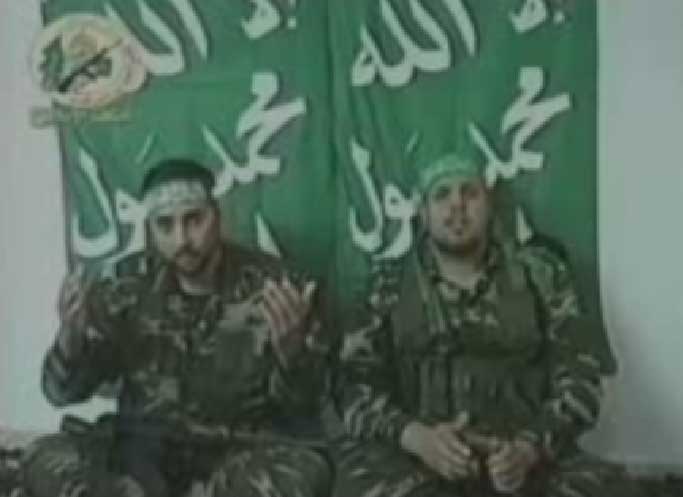At 8.30 p.m. on July 25, an explosive device detonated outside the Hilal Cafe, frequented by leading Hamas activists in Gaza City. The explosion occurred next to a vehicle belonging to Nihad Masbah, a Hamas commander. Along with him, the blast killed four other Hamas operatives and a four-year-old girl; more than 20 others were wounded.
Specifically, Hamas leaders assigned responsibility for this terrorist attack to Muhammad Dahlan, the former Palestinian Authority national security adviser. Following the explosion, Hamas Prime Minister Ismail Haniyeh vowed to “seek justice” and punish all responsible for bloodshed.
Hamas’s security forces immediately began to make arrests throughout the city, apprehending 160 people aligned with Fatah. The arrests set off a new wave of the ongoing fighting between Hamas and Fatah factions.
That violence reached its height last aweekend, when nine Palestinians were killed and more than 90 wounded in Gaza City in further clashes between the two factions.
It is not the first time since Hamas gained control over the Gaza Strip 13 months ago that its combatants have opened fire at Fatah activists. With Israel as their common enemy, extremists contest political power in the not yet established Palestinian state. Like terrorists of other ideological orientations throughout the world, they are also fighting over the control of scarce economic resources. The Russian radical tradition is particularly illustrative of this point.
Photo: “For the sake of Allah”
BEFORE THE 1917 revolution, Russian terrorists, while frequently collaborating against the hated imperial regime, did not enjoy an idyllic relationship of comrades-in-arms. Often inter-faction rivalries resulted in violent exchanges of verbal abuse and threats. Extremists from different groups stole money and weapons from one another and engaged in physical fights.
When they could not peacefully settle conflicts – usually over expropriation spoils – terrorists used weapons against one another, the argument all of them understood best.
Time and again fortunes disappeared from party treasuries, radicals accusing one another of pocketing the money. Some “comrades” tried to blackmail others for cash, threatening to pronounce them police agents if they refused to comply.
They bickered and fought over the loot like common thieves and often disbanded revolutionary cells. Then off each radical went (sometimes with a share of the expropriated funds), and on many occasions joined rival combat groups, disregarding any ideological and organizational conflicts that might have previously separated the fellow-fighters.
‘BEHIND the raging debates on the philosophies of Marxist materialism… lay the politics of another kind of material: money,” affirms historian Boris Nicolaevsky, an expert on Bolshevik shady enterprises. He argues that the ideological squabbles in the highest spheres of the Russian Social Democratic Workers Party (RSDRP) were in fact over the control of the treasury, filled primarily by expropriations (“exes”) of state and private property.
The mastermind of the most profitable “exes” was the so-called Bolshevik Center, a clandestine circle of Lenin’s supporters within the predominantly Menshevik central committee of the RSDRP. The center was under constant attack from the less opportunistic, yet equally covetous Mensheviks, who had nothing against expropriations per se and resented only the Bolshevik refusal to share the proceeds. The Mensheviks demanded their share of the loot and threatened to expel from the party’s ranks the “bandits” and “thieves” – i.e., the instigators and practitioners of the Bolshevik “exes.”
AS A result, relations within the RSRDP were such that Maxim Litvinov, one of Lenin’s closest associates before 1917, once sent two Bolshevik combatants to the party headquarters to demand 40,000 expropriated rubles that the Menshevik central committee had spent. Litvinov threatened that if the money were not returned to the Bolsheviks, the “guys” would “bump off” one of the central committee members.
Following the November 1917 takeover, Lenin had no choice but to put aside his dream of the unilateral Bolshevik regime and share power with the radical Left Socialists-Revolutionaries (Left SRs). The Bolsheviks invited them to join the coalition government, where the Left SR were given four commissar positions. The Left SRs also held high posts within the Soviets’ repressive organs, including the notorious secret police force, the Cheka.
Along with the Bolsheviks, the Left SRs proceeded to enact Lenin’s policy of the Red Terror, aimed at eradicating “counterrevolutionaries” for any criticism of the new administration.
On July 6, 1918, Left SR Iakov Blumkin assassinated the German ambassador in Moscow, Count von Mirbach; to this day historians still disagree about the motivation.
Some argue that the Left SRs were attempting to sabotage the Treaty of Brest-Litovsk, which Lenin’s government had signed in March 1918, conceding to Germany enormous territories and indemnities in exchange for peace, essential for the survival of the Soviet regime.
Mirbach’s assassination supposedly prompted a full-fledged Left SR uprising against the Bolsheviks, who suppressed it and arrested the rebels’ leadership, which, Lenin claimed, had violated the two-party coalition.
According to another opinion, Blumkin, a leading member of the Cheka, acted on the orders of its head, Bolshevik Feliks Dzerzhinsky. His aim was to provoke Lenin’s suppressive action against the Left SRs, who had no intention of rebelling against the government. Mirbach’s assassination and the ensuing exchange of fire between former allies served to fulfill Lenin’s underlying purpose of establishing a single-party Bolshevik regime.
NEARLY a century later and at the other end of the world, the extremists are following similar patterns of eliminating political rivals. Over the final weekend of July, Hamas continued its repressive operations in Gaza, arresting in total almost 200 Fatah activists.











